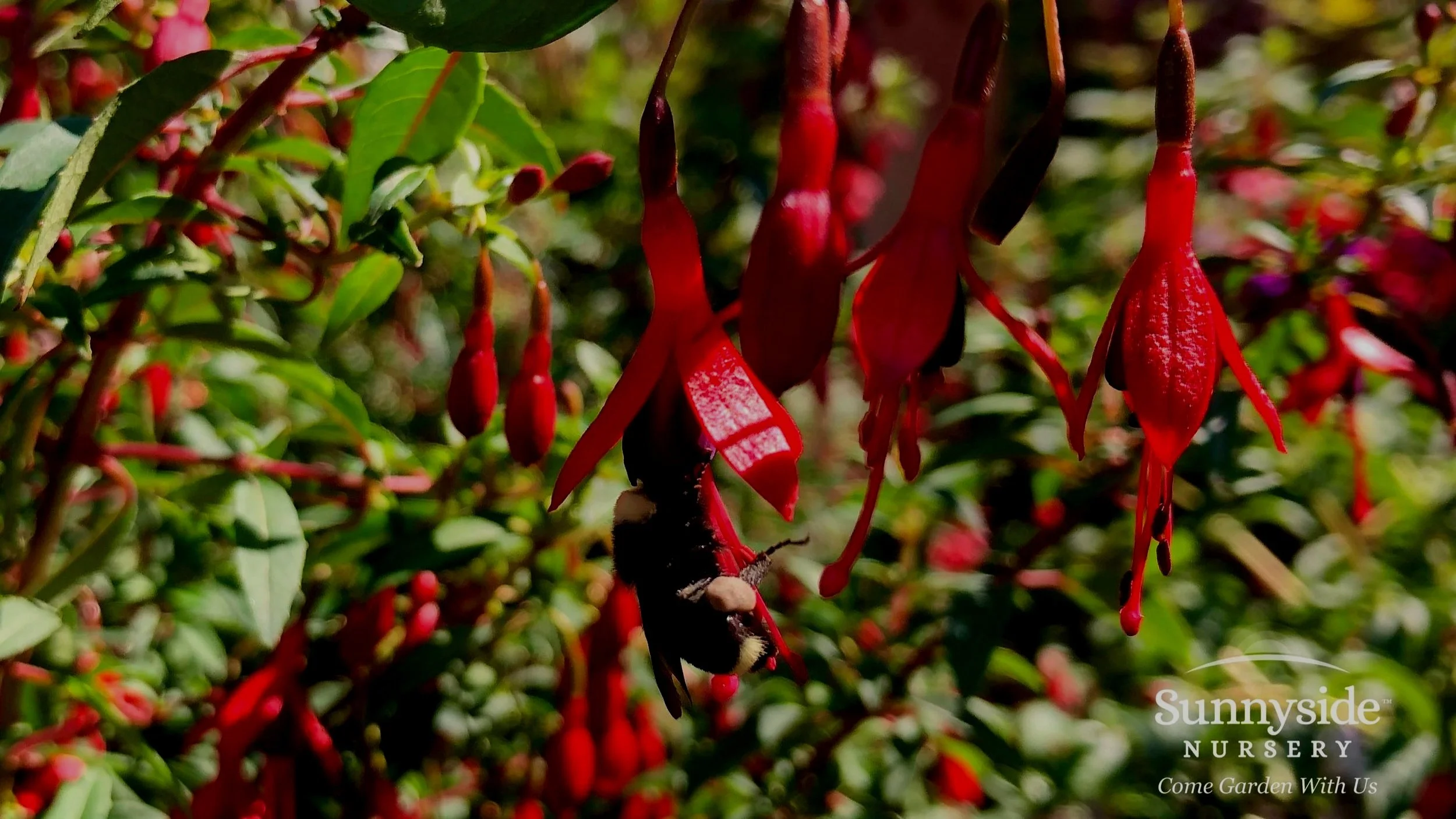If you are looking for a perennial that will bloom from June until frost, will tolerate full sun or part shade, comes back every spring (unless Mother Nature is really nasty to us) and makes a wonderful companion to so many other plants, then what you need is a hardy fuchsia! They are hard to beat for nonstop blooms all summer long.
My first encounter with hardy fuchsias was a variety called Fuchsia magellanica ‘Riccartonii’. It has narrow pendent red and purple dangling flowers held against a background of dark green foliage. Growing in full sun to an amazing 5 feet tall in one season, it packs quite a punch in the garden. In milder climates I have seen this variety used as an evergreen hedge or even pruned up into a small 8’ to 10’ tall tree. Sadly, in the northwest we have to treat it as a perennial that dies back to the ground every winter.
There are over 100 species in the genus Fuchsia, most originating from mountainous regions of the Americas, though some are from New Zealand and Tahiti. The vast majority originate from the species magellanica. There are over 8,000 hybrids and cultivars, mostly from Chile and Argentina.
When I purchased the nursery back in 1989 the previous owners were active in the Northwest Fuchsia Society and propagated over 350 varieties of fuchsias, most of which were destined to be grown in hanging baskets. Over the last 30 years, hardy fuchsias have gained popularity so much so that now we probably sell more hardy varieties than we do hanging basket varieties. Here are several ones that are currently available in most garden centers this time of year. You have to wonder how they came up with some of these names!
Delta’s Groom — This variety has single blooms with curved purple-red sepals (that’s the outside set of petals) and dark purple corollas (this is the inside set of petals). This small, upright form is perfect for smaller gardens, reaching only 18 inches tall and wide.
Army Nurse — The sepals are red and the corolla is bluish-purple. The plant gets a little taller, reaching 36 inches by 36 inches
Sharkie — Red sepals and violet corollas on an upright plant that will grow up to 3 feet tall.
Campo Thilco — This is a hybrid (between F. magellanica and F. campos-portoi) that displays hybrid vigor and increased frost tolerance. The flowers are dainty and have red sepals and violet corollas. The plant is upright and can reach 6 feet tall in one summer.
Little Giant — Similar to ‘Riccartonii’ but more compact, with the same red on the outside, rich violet on the inside flowers.
Sunshine — This variety was introduced the same year I was born! It has light pink sepals that are green tipped and the corolla is slightly darker pink. It grows 3’ by 3’.
President — This variety bears masses of flowers with pink sepals and a single purple to reddish-purple corolla.
Golden Gate — Its red sepals and purple corolla are a stunning contrast to the golden foliage and of course even without the blooms, the foliage will dress up any shady spot in the garden.
All fuchsias are hummingbird magnets and will also attract other pollinators like bees. I have been told that the fruit (seeds) are edible, but if you leave too many on the plant it will stop blooming. Winter protection involves not pruning too severely (or at all) until spring when you will see signs of new growth down around ground level. Mulching in the fall is also a good practice. Sometimes you will lose a few plants over the winter, but once established, hardy fuchsias should return every spring more robust than ever. They are typically slow to wake up, so don’t give up on them too soon.
As I said at the beginning, despite the fact that most nurseries market hardy fuchsias in their shade department, you can easily grow them in full sun and they will be more sturdy and stocky - just make sure you have amended your soil well and are watering on a regular basis. I have also found that like many “woody” perennials, fuchsias will be somewhat floppy the first season, but as the years go by they will become more upright. Just the same, it is always a good idea to have some stakes ready to give them a little extra support should they need it half way through the growing season.
Surprisingly, I don’t have one hardy fuchsia in my garden right now, but I think that is about to change. After looking over the choices in the nursery, I have spotted several that will be finding a home shortly. Hopefully, you will too.



